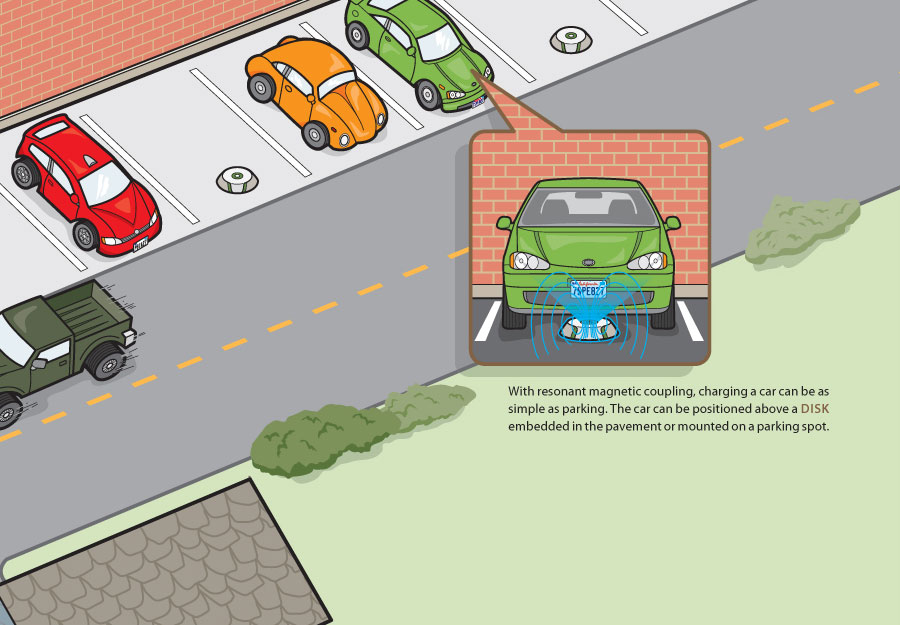sierraclub.org - sierra magazine - sept/oct 2012 - innovate-electric-cars - innovate: electricity in the air
By David Ferris

Despite the initial excitement, electric cars have been rolled out at an underwhelming pace. Even those drivers who yearn to say goodbye to the gas pump have some doubts: Will my battery run out during that trip to Chicago? What if I forget to plug in my car and wake up one morning to a depleted battery?
Researchers may have discovered one way to address this so-called range anxiety over electric cars. A technology called resonant magnetic coupling could one day transmit power wirelessly from the electric grid to an EV, allowing batteries to charge without being plugged in. Magnetic loops embedded in roadways could charge cars as they were being driven, a prospect that would make stopping at a gas station (or parking for hours at an electric charge station) obsolete. "Electric avenues" would also reduce the size of the batteries needed in cars, trucks, and public buses, enabling them to be lighter and more nimble.
The technology could also lead to cordless and mobile televisions, lighter battery packs for soldiers in the field, and a whole new class of medical implants. And it could finally win the war against throwaway batteries that are tossed into landfills by the billions every year.
Magnetic Personality
 Marin Solja'ci grew up in Croatia revering one of the country's towering figures, the odd and brilliant electrical engineer Nikola Tesla. A century ago, Tesla made some earthshaking breakthroughs, like discovering alternating current, and came up with one spectacular dud: an 18-story tower he built on Long Island that was meant to transmit power wirelessly around the globe.
Marin Solja'ci grew up in Croatia revering one of the country's towering figures, the odd and brilliant electrical engineer Nikola Tesla. A century ago, Tesla made some earthshaking breakthroughs, like discovering alternating current, and came up with one spectacular dud: an 18-story tower he built on Long Island that was meant to transmit power wirelessly around the globe.
Solja'ci, 38, immigrated to the United States as a college student and is now a physics professor at the Massachusetts Institute of Technology. He recently discovered how to fulfill a small but important part of his famous countryman's vision: He can transmit electricity across a room without using wires.
His inspiration came in the early 2000s from his wife's annoying cellphone. When its battery ran low in the middle of the night, the phone would wake him up. "It would make this really loud and unpleasant noise, and once it started, you couldn't turn it off," he recalls. He wondered, "Why can't this thing take care of its own charging?"
He started looking for a solution in his lab, and by 2007 he could illuminate a 60-watt bulb located more than six feet from its power source by using magnetic fields. While other devices, like electric toothbrushes and induction stovetops, had been powered wirelessly before, none had been powered from such a distance.
Solja'ci won a MacArthur "genius" grant in 2008, not long after he founded a company called WiTricity, which is licensing the technology to power a trove of gadgets, from wall-mounted televisions to electric-car charging systems to pumps strong enough to aid a weak heart. He has yet to zero in on the "killer app," but he's confident it will be big.
"We are facing a much smaller challenge than Tesla was facing," says the professor from his Cambridge laboratory. The quest to charge a cellphone a few feet from an outlet may not be as visionary as Tesla's dream to wirelessly power the world, but it's an ambitious stride away from wall plugs and tangled power cords.
Illustrations by Brown Bird Design